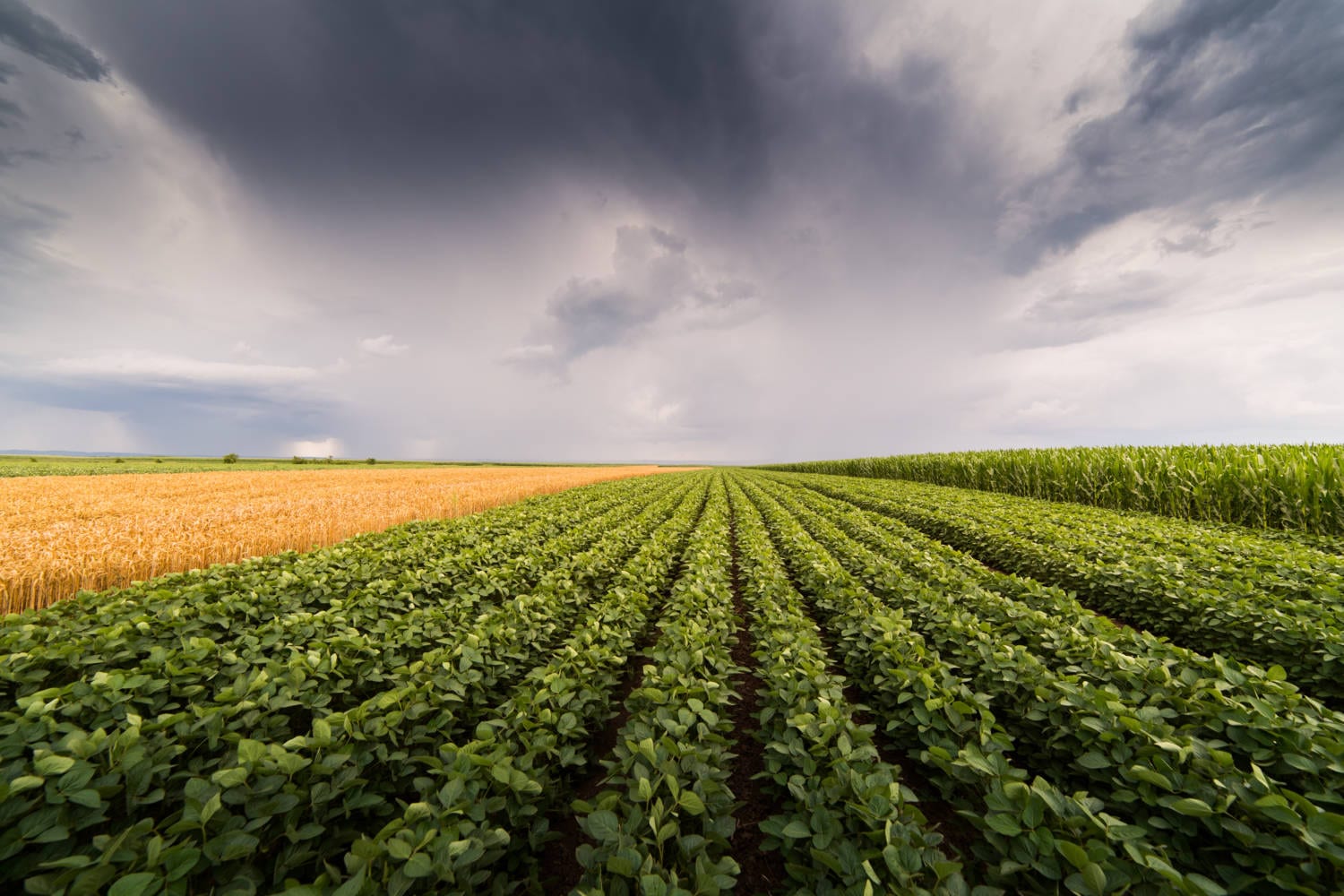U.S. soybean farmers and industry researchers are figuring out both how they can be part of climate solutions and how they can adapt to continue supplying high-quality soy. A variety of efforts, meetings and research are helping U.S. Soy better understand how to respond to climate variability.
For example, one Qualified State Soybean Board (QSSB), the Illinois Soybean Association, recently hosted a summit of nearly 50 attendees in Chicago to explore shifts in climate over the last 100 years, what different industries are doing and how agriculture can participate, as an AgriNews article explains.
“There’s no one single contributor when it comes to carbon dioxide emissions,” said Jim Angel, retired Illinois state climatologist. “Each industry has the opportunity to decrease its carbon footprint, but agriculture has the unique opportunity to take some away. Carbon dioxide can be put back into the soil through organic matter.”
That creates a growing focus on climate-smart agriculture, according to Jill Wheeler, head of sustainable productivity in North America at Syngenta. “We need to integrate and bridge the gap between industry and producers,” she said. “Industries have started to make sustainability commitments, but we need to make sure we can meet those commitments first. Farmers are an important part of finding this solution, and we need to make sure they are a part of the conversation.”
Building awareness
The meeting in Chicago is just one example of ways U.S. farmers are engaging in climate discussions. Last summer, the U.S. Farmers and Ranchers Alliance hosted a meeting with government representatives, industry leaders, food companies, anti-hunger advocates and more.
In Nebraska, farmers are exploring ways to rebuild soil and sequester carbon. In Florida, farmers and ranchers launched a working group to discuss climate change and how agriculture can help. Similar groups have cropped up in other U.S. states, including North Carolina, Ohio and Missouri.
And in Iowa last fall, farm leaders discussed climate-smart agriculture with Iowa State University. This conversation included potential solutions to help farmers adapt and continue improving their sustainability despite weather swings, according to highlights from the Iowa Soybean Association, another soy industry QSSB.
“Farmers aren’t denying that the climate is changing,” said Wayne Fredericks, an Iowa farmer and American Soybean Association board member. “We’re trying to figure out how to farm as it happens and still be profitable.”
For example, as a climatologist, Illinois’s Angel expects the U.S. Midwest to become warmer and experience more frequent and heavier rains. Figuring out how to continue farming sustainably with such changes has led to a variety of other research efforts.
Understanding changes
Climate discussions have sparked a variety of research efforts to figure out the potential impacts and ways that U.S. farmers can adapt to them.
For example, last summer the U.S. Foundation for Food and Agriculture Research awarded a Seeding Solutions Grant to the government’s Agricultural Research Service and partners North Carolina State University and the Institute for Biotechnology in Flanders, Belgium, to improve soybean crop resiliency.
“Our research demonstrates that the response of soybean protein content to temperature varies among different genetic varieties,” said Dr. Anna Locke, the principal investigator of this project. “Using deep learning techniques, we can analyze the effects of weather variability on soybean yield and protein production and work to develop high protein varieties that can withstand the stresses associated with changing climates.”
The project will evaluate key temperature stress regulators, develop a test to rapidly screen soybean genotypes for temperature tolerance, and ultimately provide data that will allow crop breeders to identify new temperature tolerant soybean varieties more efficiently.
Another study found rising temperatures and carbon dioxide levels could have opposing effects on nutrients in soybeans. Scientists at the Danforth Center in St. Louis, the University of Illinois Urbana-Champaign and the U.S. Department of Agriculture examined the effects of raising carbon dioxide levels and temperatures on soybean plants. They found that while carbon dioxide raised soybean yields and lowered iron and zinc levels, hotter temperatures lowered yields and raised mineral levels.
And there’s much to learn about how different regions of the country could be impacted by changes. Statistical analysis from the University of Minnesota notes that higher temperatures and more rain have increased yields in the Northern Plains of the U.S., even as yields stagnate or fall in the eastern Midwest.
Together, conversation and research will help U.S. Soy be part of the climate solution while maintaining their supply of high-quality soybeans to help meet global protein demand.
